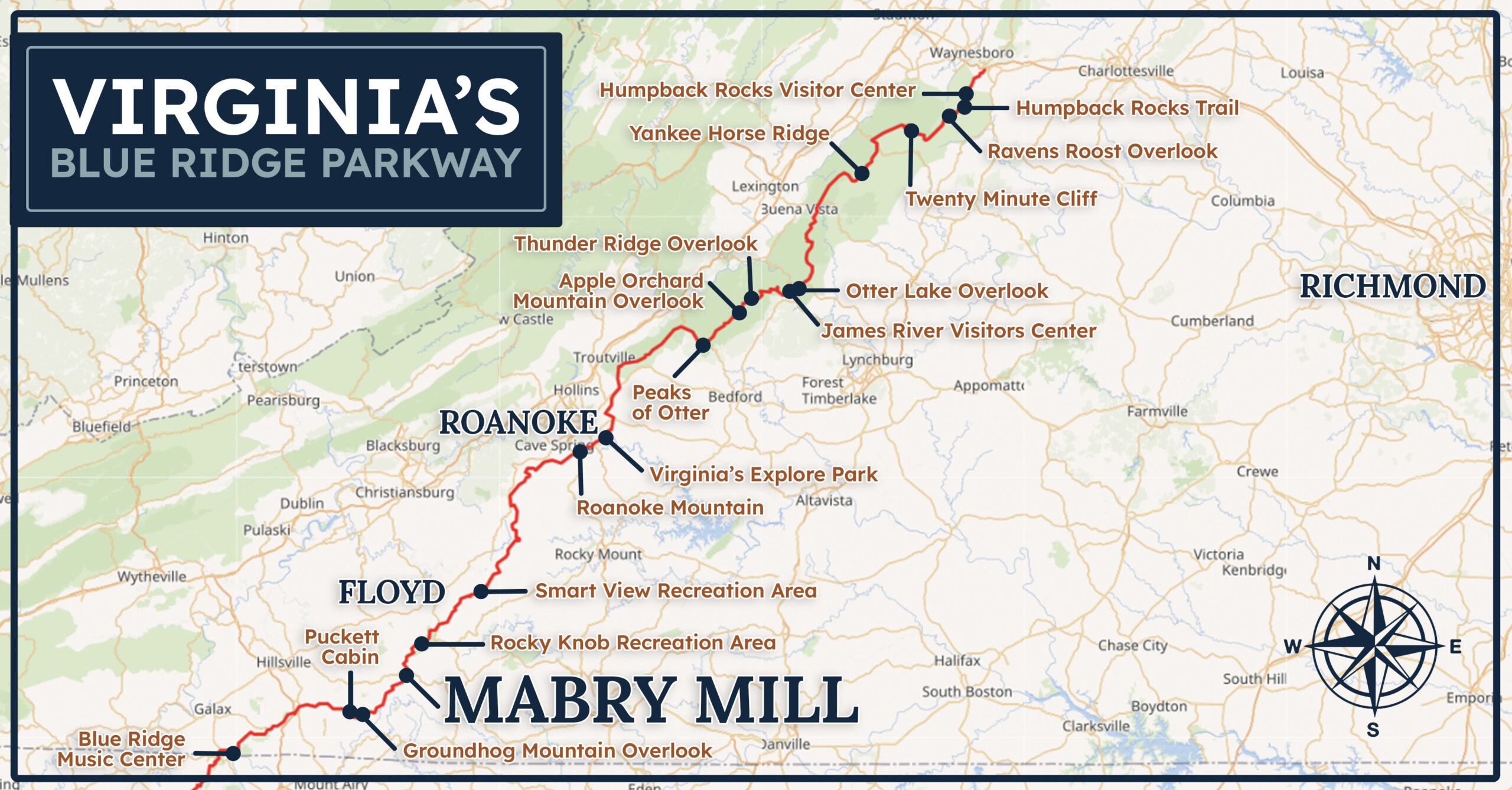
About
Rich in the Region's History
Maintaining locations like Mabry Mill ensures that their cultural and historical importance will survive to educate future generations about significant American milestones. Mabry Mill is perhaps the most iconic structure on the entire Blue Ridge Parkway.
As a public works project begun during the Great Depression, the Blue Ridge Parkway is the first and longest rural parkway in America. Administered by the National Park Service, the 469-mile long parkway extends through the southern Appalachians of Virginia and North Carolina, linking Shenandoah National Park and Great Smoky Mountains National Park. Along the parkway, travelers experience stunning pastoral and mountain vistas, along with a great diversity of plant and animal life. In addition, visitors encounter the region’s history, culture and traditions of craft, music, and agricultural heritage, brought to life through historic sites, artifacts, displays, live interpretation and performance.
Mabry Mill is one of the most visited sites on the Blue Ridge Parkway. Several hundred thousand travelers visit the Mill each year, a turn of events that Ed and Lizzie Mabry probably could not have predicted when they built the Mill more than a century ago!

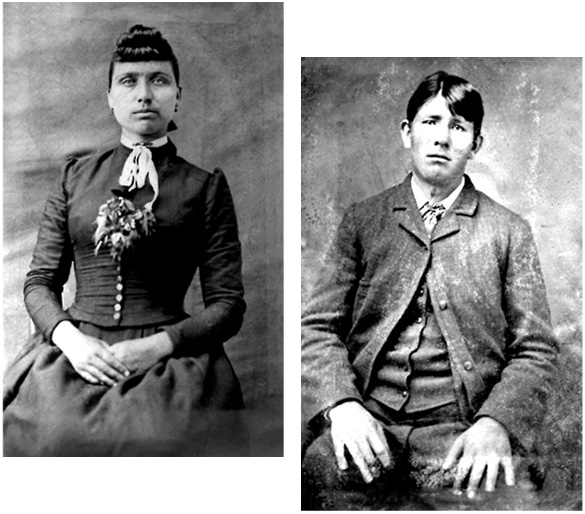
Around 1905 Ed and his wife Lizzie Mabry set in motion actions to realize the dream of their own gristmill. With the help of a neighbor, Newton Hylton, they built the gristmill, waterwheel, and water supply flume system with hard work and hand tools.
By 1908 the gristmill was in operation and people from as far away as eight miles were bringing their corn to be ground. By this time, Ed Mabry was ready to move on to his next project, which was to build a sawmill on the left side of the gristmill.
While Ed was busy building the sawmill, Lizzie took over the milling duties at the gristmill. Many even said Lizzie was the better miller of the two. There was a problem because the streams used to supply water to the mills were small. There was not enough needed water power. Due to the lack of water power, the process of grinding the corn at the Mabrys’ mill took longer than at some of the other nearby mills. Mills with plenty of water power would at times grind too fast. The resulting friction turned to heat which would then burn and scorch the corn meal leaving it tasting bitter. Because of the low water power problem at the Mabrys’ mill, it was known as a slow grinder. Due to this problem the Mabrys could not grind the corn fast, but they also never burned or scorched the corn meal which resulted in some of the best tasting corn meal around. This news spread fast, which brought many loyal customers to the Mabry’s little mill.
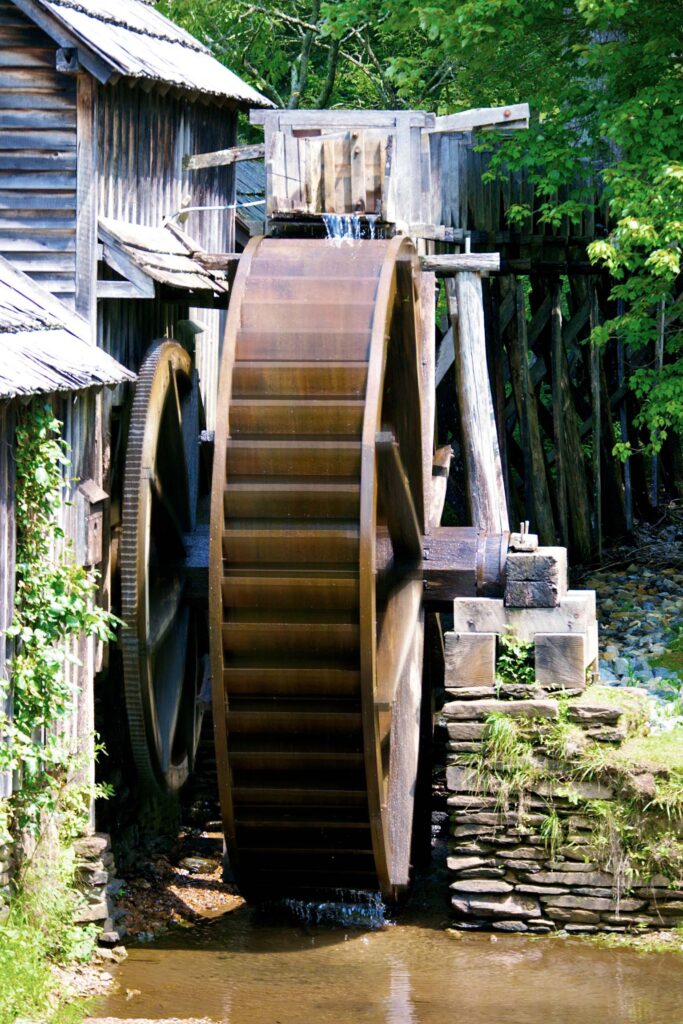
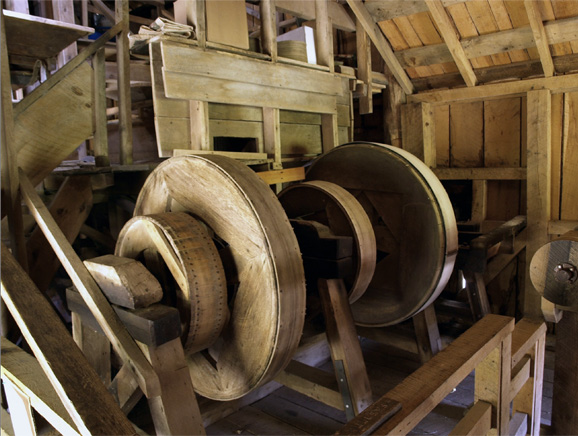
Around 1910, the sawmill was added for Mabry to operate in rainy weather when the water supply to the mill increased. A sliding carriage transported logs of oak, chestnut, and other species past a circular saw. Like the gristmill, the saw was powered by belts and shafts connected to the water wheel.
Once the sawmill was finished, Ed began to build a woodworking shop on the right side of the grist mill. This shop had a double-bladed jigsaw, a wood lathe and a tongue and groover all run by the water-powered waterwheel. This completed the gristmill complex with the sawmill, gristmill and woodworking shop all attached.

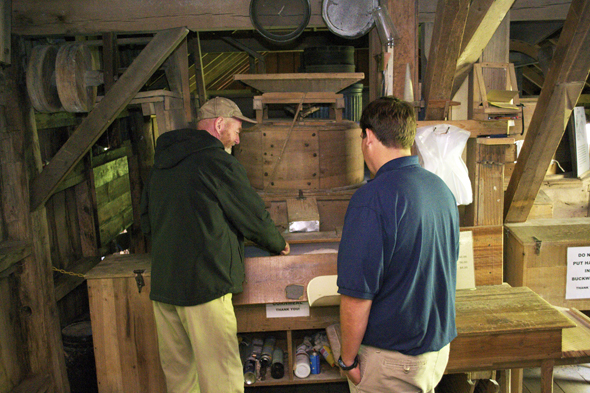
Around 1913-1914, the Mabrys decided to build a new blacksmith/wheelwright shop beside the gristmill complex. This brought even more needed services to the mountain community.
Later, after many years of hard work building up their business at the mill site, Ed and Lizzie decided to build a new house for themselves. Sometime around 1918-1920 the Mabrys built, by their own hands and skill, a two-story white farmhouse. After Mr. Mabry’s passing in 1936 it was dismantled. The approximate site of that house is where the Matthews Cabin is located at Mabry Mill today.

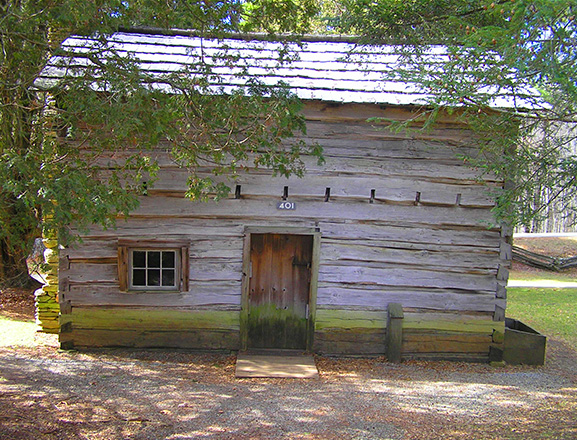
Matthews Cabin was donated by Mr. K.R. Matthews in 1956 and moved from another site. The historic cabin provides visitors to Mabry Mill a chance to tour a home from the latter half of the nineteenth century.
Historical Significance
The National Park Service acquired the Mabry Mill property in 1938 after Ed died and Lizzie moved away. The gristmill complex and the blacksmith/wheelwright shop were deemed historically significant by the Park Service as representing the rich cultural past of the Blue Ridge Mountain region. In 1942 those structures were completely restored, giving the Blue Ridge Parkway yet another gem along its beautiful winding 469 miles through the heart of Appalachia. Every year Mabry Mill, the legacy which Ed and Lizzie left us, is visited by people from all over the world. We invite everyone to come visit us here. Enjoy some great food, great music, great history, great people, and all that is Mabry Mill.
This historical summary on Mabry Mill was compiled from Michael Ryan, author of Ed and Lizzie, the Mabrys and Their Mill, which is available at the Mabry Mill Gift Shop.

